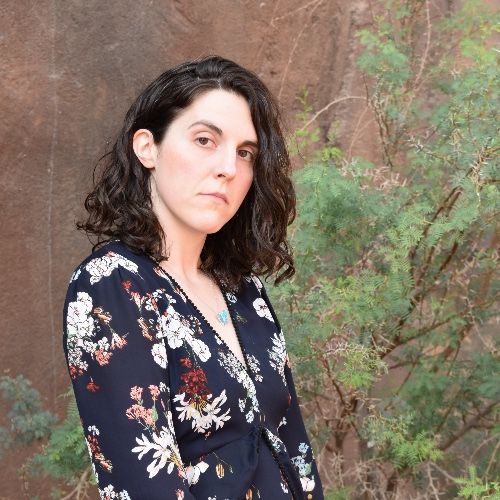Episode 32
The Truth About Dandelions with Host Stephanie Barelman
The Truth About Dandelions
Episode Introduction
In today's episode, The Truth About Dandelions, we discuss what it means for a plant to be useful, what bees really want in their bento box, and resources for you to grow a rebellious garden year-round that humans and wildlife can enjoy.
Host Stephanie Barelman
Stephanie Barelman is the founder of the Bellevue Native Plant Society, a midwest motivational speaker surrounding the native plants dialog, and host of the Plant Native Nebraska Podcast.
Episode Sponsors
Today's episode is sponsored by:
Lauritzen Gardens
Listen, rate, and subscribe!
Get some merch! https://plant-native-nebraska.myspreadshop.com/
Find us on Facebook
Visit our homepage https://plant-native-nebraska.captivate.fm
Give us a review on Podchaser! www.podchaser.com/PlantNativeNebraska
Support My Work via Patreon
The Plant Native Nebraska podcast can be found on the podcast app of your choice.
Episode Content
Dandelions: Public Enemy #1 Vs. Freedom Fighter?
Our parents (I'm looking at you, boomers) and their parents bought in to the idea of pristine and high-maintenance landscapes and dandelions look like a rebellious boy on a motor-bike.
What Dandelions and Native Plants Have in Common
Both native and non-native plants can be judged for being unruly and not conforming to societal expectations for perfect, tidy landscapes. But in aspiring to have native-plant forward gardens, we try to rely less on ideal aesthetics and more on what is wholesome for wildlife but also, sustainable.
Respect What's Native Where It's Native While Also Acknowledging Naturalized Plants Can Have Useful Qualities.
What's native will change where you go. It varies across the U.S. and across the globe. There's a strong benefit to planting locally historical plants but that doesn't mean we need to demonize all non-native plants. One-size-fits all never really lives up to its name, does it?
A Little Backstory on the Dandelion
The Dandelion, Taraxacum officinale, is native to Europe and Asia and is a true herb of antiquity. So for those of you who might not know, it’s not native.
Ancient Medical
Has been hailed for its many medicinal uses including problems with the bladder, liver, and stomach.
Culinary Wonder
Every part of the plant is edible, which is unique for most plants. We’re talking salads, cooked greens, edible flowers, teas, wine.
Indigenous Use
The Iroquois tribe alone used it for pain relief, to treat dropsy, digestive and urinary problems, and lung inflammation, among other things. Many other tribes learned its usefulness quickly.
Do Bees Need Dandelions?
No, while generalists may browse them year-round( long bloom time,) generalists use whatever sources are available. There are other more nutritious foods and there are foods that cater to all bees, not just the generalists.
Don’t Dandelions Bloom Before Everything Else?
Only if all you have is brome or Kentucky bluegrass.
Early-Blooming Natives for Shade
- Bloodroot
- Jacob’s Ladder
- Spring Beauty
- Common Violet
Early-Blooming Natives for Sun
- Prairie Smoke *regional native
- Spiderwort
- Pasque Flower
- Golden Alexander
- Field Pussytoes
- Canada Anemone
- Virginia Waterleaf
- Penstemon *native and regionally native species
- Wild Geranium
Native Trees for Early Bee Nutrition
- American Bladdernut
- Ohio Buckeye
- Downy Serviceberry
- Eastern Redbud
- Chokecherry
Powerhouse Natives for Bees Year-Round
- Native Sunflowers
- Asters
- Goldenrods
- Milkweeds
- Mountain Mints
- Yarrow (our native species)
- Coneflowers (Echinacea and Ratibida species)
- Verbena Stricta
Nutritious Trees and Shrubs
- Dogwood
- Sumac
- Elderberry
- Native Viburnums
- Buttonbush
Know Your Stuff
If you care about bees, there is a lot of really great literature out there right now by Heather Holm, the Xerces Society, Pollinator Partnership, and other experts and organizations.
Heather Holm Bees: An Identification and Native Forage Guide
Heather's Free Resources: https://www.pollinatorsnativeplants.com/resources.html
Two handouts through The Xerces Society:
"Bumble Bee Conservation"
https://www.xerces.org/publications/brochures/bumble-bee-conservation
"Native Plants for Pollinators and Beneficial Insects: Northern Plains"
https://www.xerces.org/sites/default/files/publications/22-027_01_NPPBI—NorthernPlains_web.pdf
The Xerces Society books:
- Attracting Native Pollinators
- 100 Plants to Feed the Bees
Pollinator Partnership has a Prairie Parkland Planting Guide: https://pollinator.org/PDFs/Guides/PrairieParklandrx12FINAL.pdf
If you don't keep it
- Compost it
- Make wine out of it
- Make salad out of it
- Make other food with it
Cool links:
https://foragerchef.com/category/wild-green-recipes/dandelions/
https://foragerchef.com/guide-to-dandelions-harvesting-and-cooking/
https://www.thespruceeats.com/how-to-make-dandelion-wine-1327932
Our source for historical indigenous use:
Daniel Moerman's Native American Ethnobotany
Additional content related to this episode:
What makes a plant native?
http://bonap.net/fieldmaps Biota of North America North American Plant Atlas database-select Nebraska
https://bellevuenativeplants.org Bellevue Native Plant Society
native (wild type) vs. nativar/native cultivar (cultivated by humans for desirable characteristics)
On the Web
BONAP aforementioned
BNPS aforementioned
http://www.facebook.com/groups/bellevuenativeplantsociety- BNPS on Facebook
Books & Authors
Rick Darke- The Living Landscape
Douglas Tallamy- Professor and Chair of the Department of Wildlife Ecology and Entomology at the University of Delaware, author of The Living Landscape, Nature's Best Hope, naturalist, and curator of "Homegrown National Park".
Enrique Salmon- Iwigara
Daniel Moerman -Native American Ethnobotany
Heather Holm- https://www.pollinatorsnativeplants.com
Native Plants of the Midwest
Planting in a Post-Wild World
Jon Farrar's Field Guide to Wildflowers of Nebraska
Additional Resources
- NSA at https://www.plantnebraska.org great articles and downloads
- Xerxes Society- champions of pollinator health
- Native Plant Finder- https://www.nwf.org/nativeplantfinder/
Other Local Organizations
- Green Bellevue
- PATH
- Nebraska Native Plant Society
Listen, rate, and subscribe!
Get some merch! https://plant-native-nebraska.myspreadshop.com/
Find us on Facebook
Visit our homepage https://plant-native-nebraska.captivate.fm
Give us a review on Podchaser! www.podchaser.com/PlantNativeNebraska
Support My Work via Patreon
The Plant Native Nebraska podcast can be found on the podcast app of your choice.

